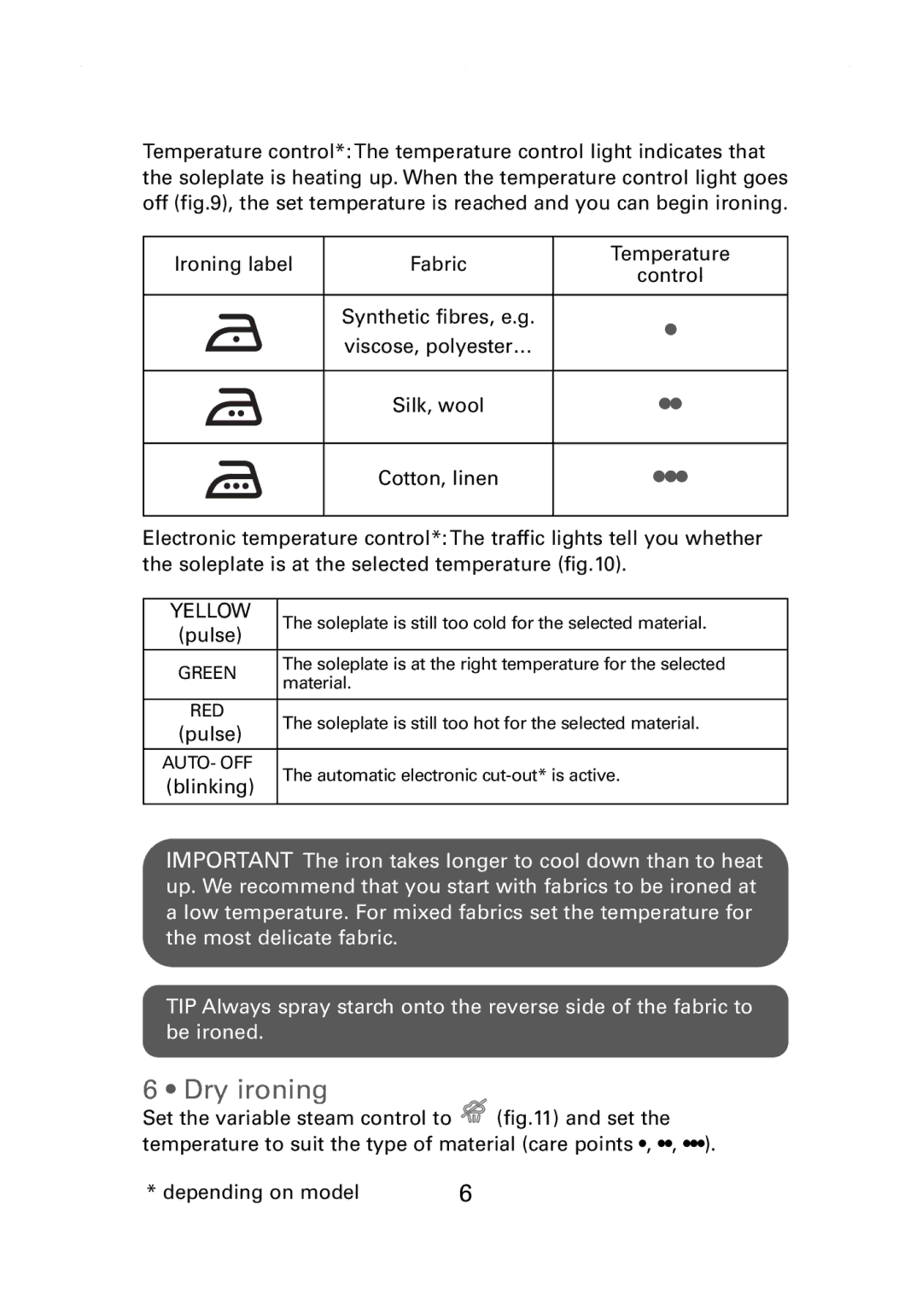
Temperature control*: The temperature control light indicates that the soleplate is heating up. When the temperature control light goes off (fig.9), the set temperature is reached and you can begin ironing.
Ironing label | Fabric | Temperature | |
control | |||
|
| ||
| Synthetic fibres, e.g. | • | |
| viscose, polyester… | ||
|
| ||
| Silk, wool | •• |
Cotton, linen
•••
Electronic temperature control*: The traffic lights tell you whether the soleplate is at the selected temperature (fig.10).
YELLOW | The soleplate is still too cold for the selected material. | |
(pulse) | ||
| ||
GREEN | The soleplate is at the right temperature for the selected | |
material. | ||
| ||
|
| |
RED | The soleplate is still too hot for the selected material. | |
(pulse) | ||
| ||
AUTO- OFF | The automatic electronic | |
(blinking) | ||
| ||
|
|
IMPORTANT The iron takes longer to cool down than to heat up. We recommend that you start with fabrics to be ironed at a low temperature. For mixed fabrics set the temperature for the most delicate fabric.
TIP Always spray starch onto the reverse side of the fabric to be ironed.
6 • Dry ironing
Set the variable steam control to (fig.11) and set the temperature to suit the type of material (care points •, ••, •••).
* depending on model | 6 |
